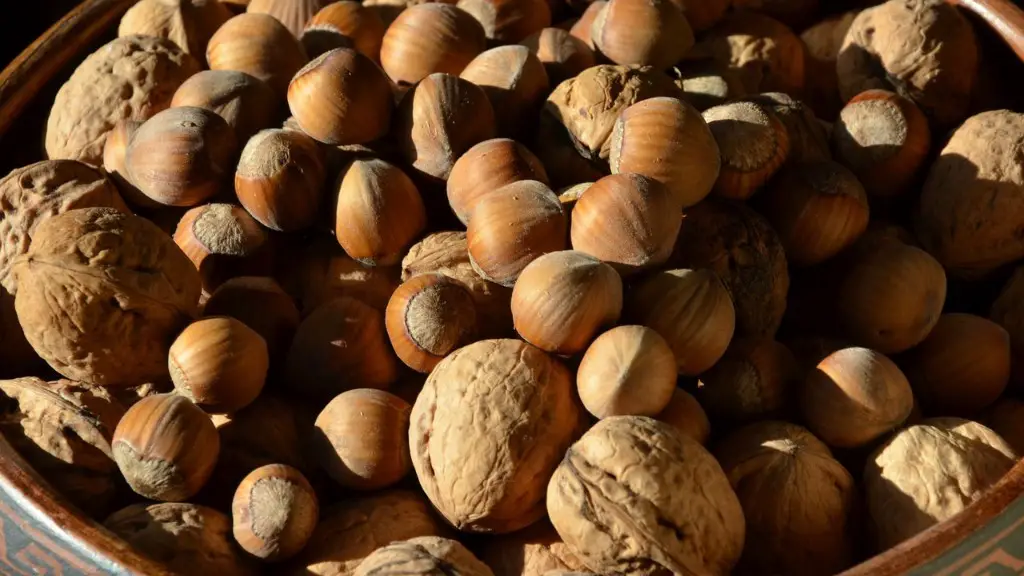Avocado is an incredibly versatile fruit, part of the diet of many cultures around the world from salads and smoothies to guacamole and toast. But there is still a lot to learn about what avocado trees need when it comes to growing them, as it is often perceived as a tricky task that requires a specific condition. Whether you plan to grow your own avocados at home or you’re just curious, this article will tackle the topic of avocado trees and how to achieve the best results when taking care of them.
To start with, the avocado tree needs good quality soil for it to do well. The soil should be slightly acidic with a pH in the range of 6.5 to 7.5, as according to experts at The University of California Agriculture and Natural Resources, while also containing some organic matter. Nutrients such as nitrogen, phosphorus and manganese are also critical to be considered as they will boost the trees’ growth and ultimately its production. Any kind of soil is suitable, as long as the correct balance of these elements is achieved.
The tree also needs an adequate irrigation system, in order to ensure that its roots never dry out. Too much water can cause root rot, however, so you should always beware of over watering. While there is no direct number for the amount of water needed for an avocado tree, the general idea is to provide the tree with 1 to 2 inches of water per week, using slow-drip irrigation systems in order to avoid evaporation or overwatering and give the tree an even amount of water.
Sun is necessary for an avocado tree, since it needs lots of sun and light to keep producing. Therefore, pick a spot with plenty of hours of sunlight, however bear in mind that you can also apply a sun shield in the shape of shrubbery during the hotter times of the summer in order to provide some shade, as suggested by experts at Gardenista. Also, during the winter months, extra sunlight will help the tree to stay strong and healthy.
Fertilizing your avocado tree is key to ensure a productive diet. A balanced fertilizer such as 8-2-10 or 8 -3-9 can be applied to the soil at the base of the tree, ideally in March and June, as suggested in Timber Press Guide. Be careful to not overdo it, however, as too much fertilizer can be damaging and cause a fertilizer burn.
The relevant pruning is also a necessary step to improve the shape, size and productivity of an avocado tree. Pruning should be done at least once a year, by removing shorter branches, aiming for a symmetrical main stem and when necessary to remove dead, damaged or diseased limbs. Besides this, pruning will help to keep the tree from growing too tall, thus encouraging fruit production.
Finally, you should always keep an eye out for pests and diseases. Symptoms such as wilting leaves and yellow spots on the fruit can be the sign of potential issues, which should be treated in an eco-friendly manner. Consult with your local nursery or expert to use natural pest removers and make sure you don’t apply anything during hot weather or periods of drought as this could worsen the situation.
Companion Planting
To make the best of an avocado tree, you should consider a companion planting strategy. This planting method relies on the idea of growing specific plants together, as they help each other through mutual benefits. In the case of the avocado tree, pollinator plants such as sunflowers, zinnias and cosmos are suitable for attracting pollinating insects and therefore helping with the tree’s production. Plants such as african marigolds and garlic chives can help ward off pests, as well as some species of basil which act as a natural pest repellent.
When it comes to vegetable companions, tomatoes, lettuce and spinach are suitable partners as they have a different root depth and will help to avoid exhaustion of the soil nutrients. Other options include parsley, carrots, mint and oregano, which is used as an alternative to pesticides. Make sure to separate fruit and vegetable companions to avoid damages caused by pests.
Fertilizer Tips
When it comes to fertilizing your avocado tree, there is a variety of organic alternatives to choose from. Molasses and Epsom salt are two of the most common organic fertilizers used by avocado tree owners and there is actually a recommendation from Rutgers New Jersey Agricultural Experiment Station. It suggests using 1 teaspoon of Epsom salt three times a year, followed by 2 tablespoons of molasses every two months, applied directly to the soil.
Organic fertilizers such as manure and composted leaves can also be mixed in with the soil, but make sure to use an aged version of them to avoid any damage to the tree. Additionally these kinds of fertilizers should be combined with a slow-release granular fertilizer, whose components should remain mixed in with the soil, while having the right nitrogen-phosphorus-potassium ratio.
Harvesting
Harvesting is an important step of the process and it is often a difficult one to time correctly. Generally, the avocado tree will reach its peak production between October and February, so this is the time you should keep an eye out for fruits. An easy way to assess if the fruits are ready, is to check the exact color of the skin and if it yields slightly to pressure. If it does, then it is the right time to pick them. The fruits should also be harvested with a special harvesting tool and careful handling is also necessary to avoid bruises.
Finally, when trying to maximize the production of an avocado tree, it is not only important to identify the ideal growing conditions, but also to estimate what kind of problems and challenges it may face. Fortunately, with the right amount of knowledge, care and a companion plant strategy, it is possible to produce lots of quality avocados at home and make the best out of this amazing fruit.
Pruning Techniques
When it comes to pruning an avocado tree, there are several techniques that can be applied to maximize the tree’s shape and production. One method is the Central Leader Pruning, which consists of creating a main stem, selecting four to six laterals (side branches) while gradually shortening the tips, while large branches and sticking out should be avoided. The spreading of the branches should form a pyramid or inverted cone shape, in order to receive plenty of sunlight and in the same sense, selective pruning can also be implemented.
Another option is Cordon Pruning, which consists of selecting 2 to 4 branches to act as scaffolds, as explained by researchers from The University of California Agriculture and Natural Resources. These branches should be spaced evenly on it and then removing the rest of the shoots growing from it. This will enable the tree to direct its energy to the main branches chosen and in turn, boost its production.
Finally, a combination of Roof Pruning and Open Vase Pruning can also be a good technique to apply. Roof Pruning refers to the removal of the central leader, while the Open Vase Pruning is aimed at creating a wider top, in order to ensure better sunlight penetration in all parts of the tree. This way, the beautiful shape of the avocado tree will be maintained and productivity will be maximized.
Disease Control
Though considering potential issues such as pests and diseases when growing an avocado tree sounds like a negative approach, it is in fact necessary. There are various symptoms you should watch for, in order to stay ahead of any potential problem. For instance, yellow or brown leaves could be the symptom of an iron deficiency, while wilted yellow leaves can be an indication of root rot or an inadequate irrigation system.
When it comes to pest control, there are several treatments available, such as insecticidal soap or citrus oils to tackle insect damage, or neem oil in the case of fungal diseases. Additionally, some experts suggest using beneficial predators, such as ladybugs, lacewings or aphid midges to control garden pests, as they do not harm the tree, but keep it healthy. At the same time, some garlic-clove mixtures are thought to be a good natural alternative, as the scent of the garlic could be a repellent for a variety of pests.
Moreover, some avocado farmers have claimed success from using a mineral oil-based spray. This is a contact spray that can be sprayed directly over the tree in order to suffocate aphids and other softer pests. Finally, paying attention to good hygiene practices for the tree, such as avoiding overcrowding, keeping the tools and pruning shears clean and removing any dead branches or hanging fruits is also essential to keep your avocado tree healthy.



